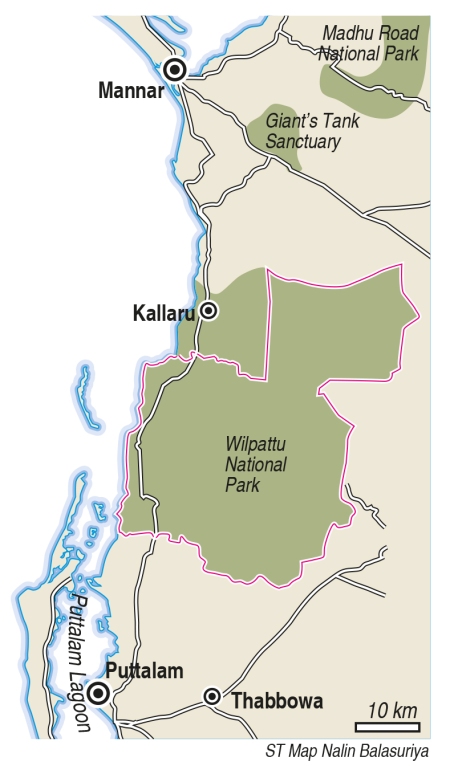The 12th Asia-Pacific Chapter Meeting of the Association for Tropical Biology and Conservation (ATBC) got underway yesterday (Sept 10) at MAS Athena in Thulhiriya. Published on SundayTimes Online on 11.09.2010 http://www.sundaytimes.lk/article/1102195/environmentalists-conservationists-gather-for-tropical-biodiversity-conference-in-sri-lanka
By Malaka Rodrigo
The 12th Asia-Pacific Chapter Meeting of the Association for Tropical Biology and Conservation (ATBC) got underway yesterday (Sept 10) at MAS Athena in Thulhiriya. The conference which was inaugurated by the President will go on till September 13. President Sirisen opened the sessions with the planting an Atamba (wild mango) tree.
ATBC is one of the largest international scientific and professional organizations engaged in promoting research, education, capacity building and communication regarding the world’s tropical ecosystems. The Asia Pacific Chapter was established in 2007.
The tropical region is the area near the equator and between the Tropic of Cancer in the northern hemisphere and the Tropic of Capricorn in the southern hemisphere.
The tropics comprise 40% of the Earth’s surface area; but has diverse habitats ranging from rainforests to deserts and from savannahs to mangroves. With the majority of biodiversity hotspots spread in the area, the tropical zone is home to 80% of species that live on earth.
With India and China making up a part of the tropical regions it is expected that it would harbor half of the human population in the world by 2030.
“This indicates that the problems faced by the environment and wild animals as well as plants would be enormous. Science has the answers on how to sustain life, so this is an important summit for Sri Lanka,” said Country representative of ATBCAP, Dr.Enoka Kudawidanage.
The theme ATBC-AP 2019 is “Bridging the Elements of Biodiversity Conservation: Save–Study –Use” which is in line with the global, regional and local agendas for the conservation of natural resources accompanied by sustainable development.
Reiterating the significance of this gathering, the co-chair of the Scientific Committee of the conference, Emeritus Professor Nimal Gunatilleke said that, “This timely meeting of over 300 international and local scientists and other stakeholders is being held in Sri Lanka at a time when the international community is trying to find new strategies to sustain life on this planet.”
The Chairperson of the Conference, Dr. Enoka Kudavidanage is confident that, “this conference creates a platform for local and international scientists, as well as conservation practitioners, to network and initiate collaboration while sharing their findings at a global forum.”
She went on to say that twenty-six symposia with over 200 oral and poster presentations are being made by the participants on a wide range of topics aimed at bridging the elements of biodiversity conservation.
While university students and researchers are also taking part in this conference Co-chair of the Conference, Dr.Sampath Senerathne said the conference was an important opportunity for such groups to learn and network with experts from different parts of the world.
While seven eminent national and international scientists are due to present keynote and plenary presentations during this four-day international conference, several workshops covering technical subjects were conducted before the conference and will be followed by research-oriented field tours.
The wholesome experience creates opportunities for scientists and practitioners to gain new insights and knowledge while acquiring skills to contribute towards capacity building within the Asia-Pacific region.








 The urbanised west of the country will not escape a financial hit from climate change. The report states: “The highly-urbanised and densely-populated Western Province, which includes Colombo, is also predicted to experience a living standards decline of 7.5 percent by 2050, compared with a situation without changes in average weather. This is a substantial drop, with potentially large implications for the country, given that the province contributes more than 40 per cent of Sri Lanka’s GDP.”
The urbanised west of the country will not escape a financial hit from climate change. The report states: “The highly-urbanised and densely-populated Western Province, which includes Colombo, is also predicted to experience a living standards decline of 7.5 percent by 2050, compared with a situation without changes in average weather. This is a substantial drop, with potentially large implications for the country, given that the province contributes more than 40 per cent of Sri Lanka’s GDP.”





















 As Colombo received torrential rain this week, humans, animals and birds managed to rush to some sort of shelter, be it under a roof or in the thick foliage of a tree – all except a particular crow.
As Colombo received torrential rain this week, humans, animals and birds managed to rush to some sort of shelter, be it under a roof or in the thick foliage of a tree – all except a particular crow.




